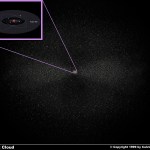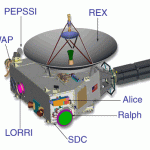Kuiper Belt
New measurements from NASA's New Horizons spacecraft revealed that Pluto, named for the Greco-Roman god once called Hades, is a little more swollen with ice than previously thought, making it the biggest trans-Neptunian object—more voluminous than rival dwarf planet Eris, which is nevertheless more massive. Greg Laden explains why these orbs are not considered full-fledged planets on his blog.
While Eris orbits the Sun within the 'scattered disc,' Pluto orbits in the Kuiper Belt, a collection of gravelly snowballs that Ethan Siegel says outnumber all the planets in our galaxy. The Kuiper Belt…
"It is not when truth is dirty, but when it is shallow, that the lover of knowledge is reluctant to step into its waters." -Friedrich Nietzsche
Although the innermost planets, from Mercury through Saturn, were known since ancient times, it's only since the advent of the telescope that we've discovered what really lives in our Solar System. Over the past four centuries, the wonders of not only the distant Universe, but also our nearby neighborhood, have been uncovered in spectacular detail.
Image credit: NASA and – I believe – G. Bacon (STScI).
The third and fourth largest planets were…
Today's guest blog post is by Featured Science Author Dr. Fred Bortz
Tune in Thursday, June 13th on our Facebook page at 10 am EST to discuss this post with Dr. Bortz!
More than ten years after it was posted at the "Ask Dr. Fred" page "Why Isn't Pluto a Planet Anymore?" remains by far the most popular page at "Dr. Fred's Place" on the web, getting anywhere between 50 and 100 hits on a typical day.
That's a lot of interest in an icy world that is smaller than the moon and so far away that sunlight takes at least 4 hours to reach it! What could possibly be so fascinating…


